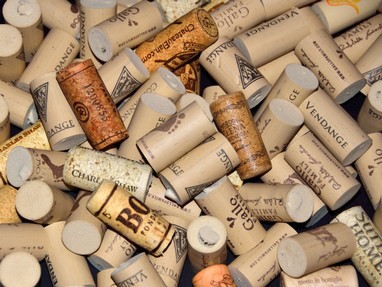All About Corks
If your house is anything like mine, a few weeks ago you heard plenty of corks popping when the clock struck midnight – something about celebrating a new year. All the popping made me wonder what makes them make such a loud sound AND why are they even used for wine anyway?
The pop was a really easy answer to find out – it is the sound made when the pressure releases from the bottle. As much as we associate that sound with wine bottles opening, it was surprising to learn that corks weren’t always the seal of choice for wine bottles. Up until the 1600’s, each bottle a glass blower made had a glass stopper blown to specially fit that bottle. Once wine bottles were being produced in consistent shapes, cork was able to be used as the primary stopper for wine bottles – and this had two huge benefits: no more breaking of the bottles in order to open them and wine could now be aged.
The marriage of wine and corks seems like a match made in heaven for all fine wine lovers – and it makes even more sense when you find that cork trees have to age before they are even able to be used by cork producers Cork trees have to be at least 25 years old before their first harvest, and after that they can only be harvested every 9 years after that.
There are several different types of corks used these days, and not all of them come straight from the tree:
Standard: the finest of wines deserve the finest of corks, and so for these bottles, a standard cork is made. These corks are cut straight from the bark of the cork tree and sorted into grades according to how dense each cork is. Some corks may be cut up to one inch longer to use for the finest of wines that need to be significantly aged.
Agglomerate: To make these, the leftover bark from the punching of the standard corks is ground and formed into standard cork shapes with a disc of sliced cork on one or both ends. These corks are more economical than standard corks but can leave wine susceptible to taint if not properly constructed.
Synthetic: Made from plastic compounds, these corks look very similar to standard corks and and have the same familiar pop when pulled from the bottle. While they eliminate the risk of taint contamination, wines made with synthetic corks are not able to be aged.
The process by which corks are made from trees is quite fascinating and if you click the link below, you can see the step by step process through both photos and written explanation.
http://www.wineanorak.com/corks/howcorkismade.htm
If any questions “popped” into your mind while reading, post them below and I will do my best to answer them!




